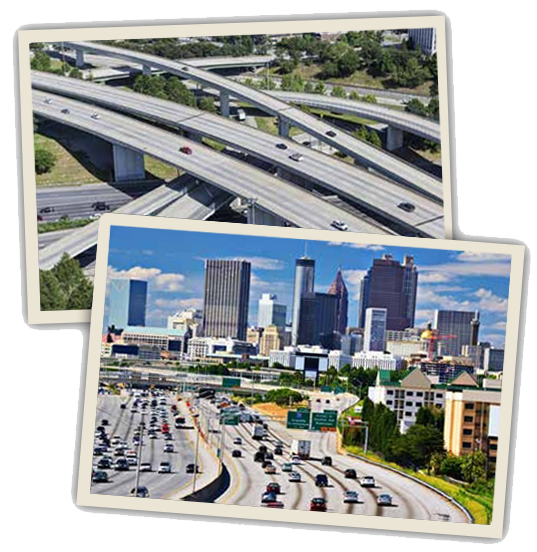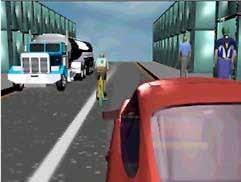
Sessions 22 - 24
Session 22-24
City Driving

Sessions 22-24 focus on driving on crowded urban roadways. During these three sessions, have your teen examine the importance of scanning ahead, lane position, covering the brake, and the hazards associated with parked cars, traffic congestion, and distractions.
Decision Making
Decision making is the most important skill used in driving. A driver operating in city traffic flow makes 50-60 decisions per mile. Drivers need visibility, space, time, and adequate traction to perform all maneuvers in city traffic whether crossing, turning, passing, or adjusting speed and/or position. During these sessions ask your teen to focus on controlling space to the front and speed to enhance visibility, space, time, and traction.
Driving on congested roadways allows a very small margin for driver error. Effective searching skills and driver alertness are both essential. Every second counts in this driving environment.
Have your teen identify city driving hazards. Examples of city driving hazards include:
- parked cars; cars entering or exiting parking places; doors opening, etc.;
- delivery trucks; drivers racing to and from the trucks, stopping suddenly, etc.;
- buses; loading and unloading passengers;
- blind alleys; cars or bicyclists darting out of alleys;
- pedestrians; moving to and from office buildings, stores, crossing streets, etc.;
- limited sight distance and intersections spaced at shorter intervals;
- aggressive, impatient drivers competing for lane space or a parking place; and
- stop and go traffic flow.
- Emergency vehicles assisting drivers on the side of the road.
When the new driver identifies a hazard, coach the driver to cover the brake to be prepared to stop or slow suddenly and identify an alternative path of travel. Covering the brake involves taking your foot off the accelerator and holding it over the brake pedal. Remind your teen not to rest the foot on the brake pedal. This is called riding the brake, and will both confuse other drivers and add unnecessary wear to the brakes.
Lane Position
Have your teen position the vehicle in the lane to provide the greatest amount of space between your vehicle and a potential hazard. Ask your teen to identify the least congested lane. On a three-lane roadway, the middle lane usually has the smoothest flow of traffic. Hazards in the right lane include stopped buses, parked cars, bicyclists, etc. Hazards in the left lane include vehicles waiting to make a left turn, vehicles crossing over the center line, etc.
Passing
The dangers of passing in city traffic include:
- intersections are spaced at shorter intervals;
- cars may pull into or out of parking spaces;
- limited space;
- pedestrians;
- stop and go traffic flow;
- oncoming drivers may drift over the center line. Several times during each session, ask the driver to use commentary driving and identify potential risks 15 seconds ahead of the vehicle.
Distractions

Distractions while driving can be deadly, especially for young drivers. Ask your teen to give examples of driving distractions. Typical driving distractions include:
- texting, dialing or talking on the phone;
- passengers or pets;
- using any electronic device;
- changing the radio;
- eating, drinking, smoking or reading a road map;
- searching for an item in a purse, glove compartment, backpack, etc.;
- having books slide off the front seat or carrying other unstable items in your car;
- engaging in intense or emotional conversations;
- putting on makeup or looking at yourself in the mirror;
- driving an unfamiliar vehicle without first adjusting the mirrors and seat, selecting entertainment options, or locating the lights, windshield wipers or other vehicle controls.
In heavy traffic, coach your teen to avoid distracting activities, to search the traffic scene and not fixate on any one thing, and to focus on keeping as much space as possible around the vehicle at all times.